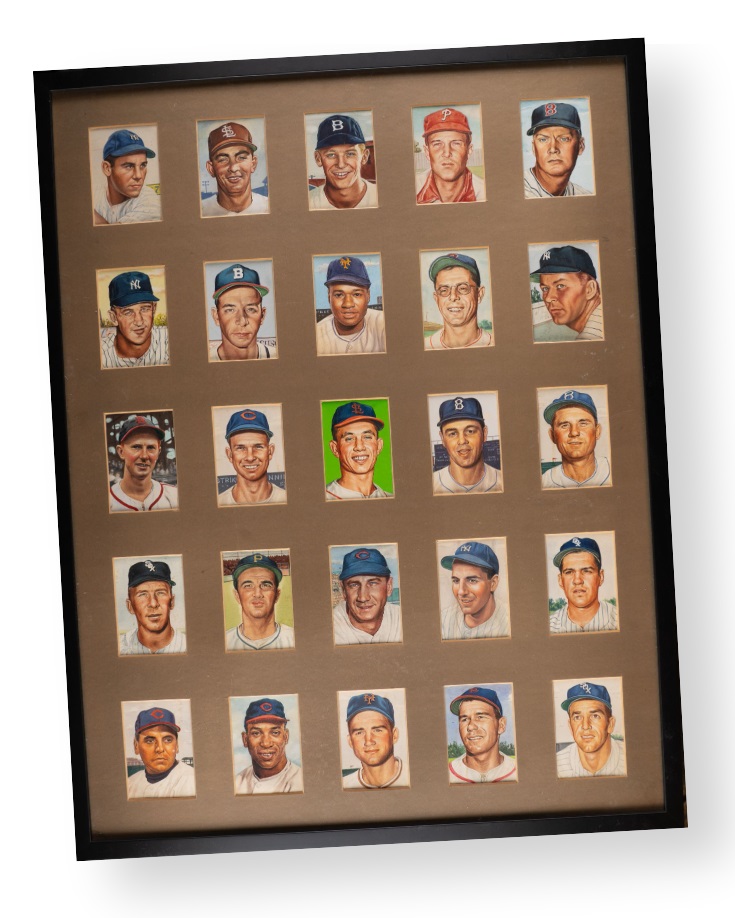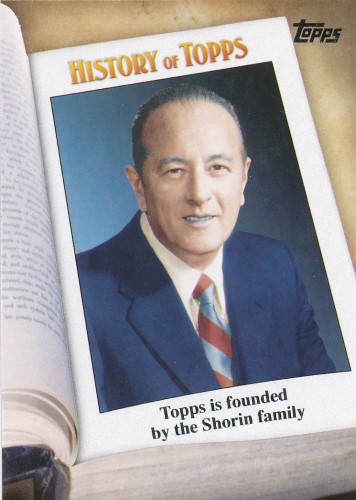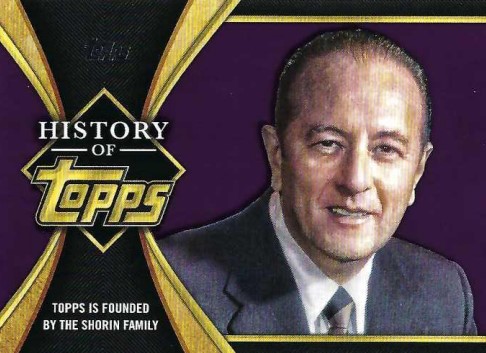By Amar Shah
The barge, full of hundreds of cases of 1952 Topps, was dumped into the Atlantic Ocean because they couldn't even give the cards away. A lost treasure of cardboard gold, now fish food.
It's a story too good to be true, an exaggerated anecdote to add even more mythos to the legend of the most iconic set, right?
"Top secret," Jeffry Shorin says with a chuckle. "They couldn't sell them for a penny; they needed to do something with the cards. The factory at that time was in Brooklyn, at a big port over there in Bushwick, and they've just loaded up a barge, pushed them all out a couple of miles, and pushed them into the ocean."
Shorin would know the truth. His grandfather, Philip Shorin, founded Topps Chewing Gum with his brothers, Joseph, Ira and Abraham. His father, Joel, would later become the company's President and CEO.
Jeffry asked his father about the story once.
"He just started laughing," Shorin recalls. "He's like, yeah, that's kind of the way it was," and shrugged it off.
Jeffry's father was also famous for one of the most significant innovations in the hobby.
“He was the man who put Bazooka bubble gum in the cards," says Shorin.
In 1938, Philip and his three brothers decided to manufacture chewing gum in Brooklyn. To stand out from the crowd against other competitors in the 1940s, Topps started producing trading cards for subjects like the TV shows Davy Crockett and Hopalong Cassidy.
However, it was in 1951 that Topps took a leap into the realm of baseball cards, releasing their iconic Blue and Red back card game set. That set had taffy inside the packs, a colossal mistake. The odor stunk and tasted like varnish from the card. Not to mention, the set was a complete flop and was nearly the undoing of Topps.
When Jeffry's father came in, chewing gum was the main thrust of the business.
"They needed a way to expand production and distribution," Shorin says. "And they wanted to do something to upend the competition, which at the time was just Bowman. So they started putting gum in the cards. It turned out to be the greatest thing they ever did because, man, baseball cards got popular in a hurry."
They sure did.
Shorin got to experience being up close with players and the game as a boy.
"My father was my hero," Shorin says. "Starting at five or six years old, I got to meet all my heroes going forward after that, from Willie Mays to Rusty Staub and Tom Seaver. I was a Mets fan. I mean, it was an incredible childhood."
As a teen, he was involved with the family business, helping with the quality control process for sets in the 1970s.
Ironically, no one in Shorin's family was a collector, even with such a rich history in the hobby. Shorin's father passed away in 1988, but he inherited a piece of memorabilia he had known and coveted his entire life.
Back in the 1950s, baseball cards didn't use photographs for images; they used actual paintings. And one of those original art pieces still hangs in Shorin's home.
"The 1953 Topps original artwork was originally in my grandfather's office. It was then passed to my father, Joel, who eventually passed it on to me. I have no life recollection without this piece," Shorin says.
The artwork features stunning images of Hall of Famers like Yogi Berra, Red Schoendienst, Phil Rizzuto, and more. These were the original images used for their cards.
"Topps always had a tremendous art department," Shorin says.
The company was big in artwork for several things leading up to baseball cards, including Bazooka Joe.
The department was led by Woody Gelman, a cartoonist who co-created Mars Attacks and Bazooka Joe, and Sy Berger, the "father of modern baseball cards."
They were famous for their 1952 Topps design, created on Sy's kitchen table. However, the 1953 Topps set was different because it used original paintings.
"They were true artists," Shorin recalls of the art department. "They were almost ahead of their time. They could have written their own comic books."
Some of those artists included Gerry Dvorak, who worked as an animator for Famous Studios. Dvorak was paid $25 per painting. He and four or five other artists created the artwork. Dvorak ended up doing around 50.
The portraits are one of a kind, something Rembrandt or Vermeer would specialize in, miniature but detailed and using a whole host of techniques like projection with a realism never seen before.
Now these family heirlooms will be up for sale in REA’s Summer Catalog Auction.
“My hope is for generations past to be able to relive the scent of a freshly opened pack of bubble gum cards and experience the total exuberance when realizing your favorite player was in the pack.”
When asked about his decision to collaborate with REA, Shorin praised the company's impeccable reputation and expertise in vintage collectibles. He admired their local presence, avoiding the need for cross-country shipping. Furthermore, their specialization in original artwork and extensive experience resonated with his desire to preserve the legacy of Topps.
For Jeffry Shorin, intertwining father and son, bubble gum and cards, art, and memories evoke nostalgia and family ties. Thank goodness the precious artwork he inherited wasn't sleeping with the fishes.
Amar Shah is a multiple Emmy-winning writer and producer who has written for ESPN.com, NFL.com, The Wall Street Journal, The Orlando Sentinel, Sports Illustrated for Kids, Slam Magazine and The Washington Post. In the 90s, Amar was a teen sports reporter and got to hang out with the Chicago Bulls during their golden era. He even landed on the cover for Sports Illustrated for Kids with Shaquille O’Neal. His debut novel "The Hoop Con" comes out on February 6, 2024 with Scholastic. You can preorder here: https://www.barnesandnoble.com/w/the-hoop-con-amar-shah/1143287376?ean=9781338840315




